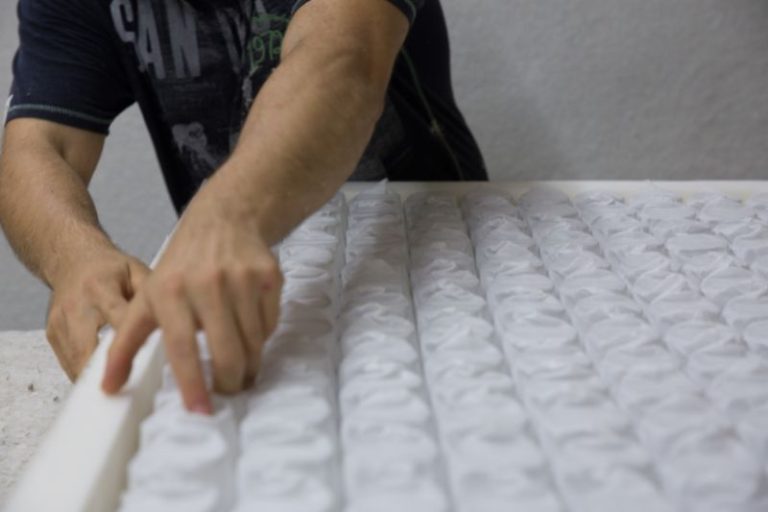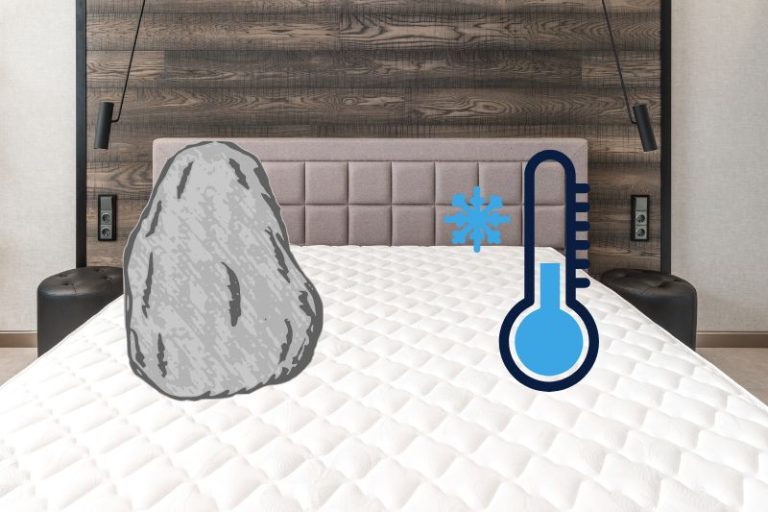How Much Yarn Do You Need to Crochet a Blanket? REVEALED!

How Much Yarn Do You Need to Crochet a Blanket?
The amount of yarn needed to crochet a blanket depends on the desired size, stitch pattern, and yarn weight. On average, a lap-sized blanket may require 1,800-2,400 yards (or 1,650-2,200 meters) of worsted-weight yarn.
It’s a common question among crafters eager to embark on their next cozy project.
The amount of yarn required for crocheting a blanket depends on various factors, such as the size of the blanket, the type of yarn used, and the stitch pattern chosen.
In general, though, you can estimate that for an average-sized throw blanket measuring around 50×60 inches, you would need approximately 1,800-2,400 yards (or 1,650-2,200 meters) of medium-weight (worsted) yarn.
Remember that this is just a rough guideline and may vary depending on your personal tension while crocheting.
So grab your hooks and let’s dive into the fascinating world of calculating yarn requirements for crocheted blankets!
Understanding Crochet Gauge:
Crochet gauge refers to the number of stitches and rows you achieve per inch or centimeter when crocheting with a particular yarn and hook size. It is an essential factor in determining how much yarn you will need for your blanket project.
Here are some key points to understand about crochet gauge:
- Importance of Gauge: Achieving the correct gauge ensures that your finished blanket will have the desired size, drape, and appearance. If your stitches are too loose, the blanket may turn out larger than expected; if they are too tight, it may be smaller.
- Measuring Gauge: To measure your crochet gauge accurately, create a swatch by working several rows and stitches using the recommended hook size mentioned in your pattern. Measure a 4×4-inch (10×10-cm) square from the center of your swatch.
- Stitch Count: Count both the number of stitches horizontally (across) and vertically (up/down) within this 4×4-inch area. The stitch count should match what’s specified in your pattern.
- Adjusting Hook Size: If you have more stitches per inch than required, switch to a larger hook size to loosen up your tension. Conversely, if you have fewer stitches per inch, try using a smaller hook size to tighten up.
- Yarn Choice Impact: Different yarns can affect gauge even when using identical hooks due to variations in fiber content and thicknesses between brands or types of yarns. Always use the same brand/type/lot number when making multiple blankets requiring precise sizing.
- Guidelines vs Exact Match: While achieving exact gauge is crucial for fitted garments or items with specific measurements like hats or socks, blankets often allow for more flexibility regarding dimensions as long as proportions remain consistent throughout.
Remember that practicing proper tension control while crocheting will help maintain a consistent gauge. Taking the time to swatch and adjust your hook size if needed will prevent disappointment later on when you find yourself running out of yarn or ending up with an unexpectedly small or large blanket.
| Key Points |
|---|
| – Gauge determines the number of stitches and rows per inch/centimeter. |
| – Measure a 4×4-inch (10×10-cm) square from your swatch for accurate gauge assessment. |
| – Adjust your tension by changing the hook size as necessary. |
| – Yarn choice can also impact gauge, so use the same brand/type/lot number for precise sizing. |
Understanding crochet gauge is essential before starting any blanket project to ensure that it turns out just right!
Choosing the Right Yarn Weight:
When it comes to crocheting a blanket, choosing the right yarn weight is essential.
The yarn weight determines not only the thickness of your blanket but also how much yarn you will need.
Here are some key considerations for selecting the perfect yarn weight:
- Consider the Purpose of Your Blanket
- If you want a lightweight and breathable blanket for warmer weather, opt for a thinner yarn.
- For cozy and warm blankets suitable for colder climates or winter months, go with heavier weights.
- Understand Yarn Weight Categories
- Yarns are generally classified into categories ranging from super fine (lace) to super bulky.
- Each category has a recommended hook size and stitch gauge associated with it.
- Check Pattern Recommendations
- Patterns often specify the preferred yarn weight and corresponding hook size.
- Following pattern recommendations ensures that your finished project matches the intended dimensions.
- Consider Crochet Experience
- Beginners may find it easier to work with bulkier yarns as they require larger stitches, making any mistakes less noticeable.
- Advanced crocheters might enjoy working with finer threads that allow intricate stitch patterns.
- Yardage RequirementsYarn Weight CategoryYardage per 100g SkeinLace400-600 yardsFingering350-450 yardsSport300-350 yardsWorsted190-240 yardsBulky110-120 yards
Remember that these yardage estimates can vary depending on your crochet tension and blanket size.
By considering these factors when choosing your yarn weight, you can ensure that you have enough materials to complete your crochet blanket project successfully.
Calculating Yardage for Your Blanket:
When it comes to crocheting a blanket, determining the amount of yarn you need is essential.
Here’s how you can calculate the yardage required for your project:
- Choose your crochet pattern: The type of stitch and size of the blanket will impact the amount of yarn needed. Consider selecting a pattern that specifies the recommended yarn weight and hook size.
- Check yarn label: Look at the label on your chosen yarn to find information about its yardage per skein or ball, as well as its recommended gauge. This will help you estimate how much yarn you’ll require.
- Make a swatch: Before starting your blanket, create a small swatch using your selected stitch and hook size. Measure this swatch to determine how many stitches and rows are in one inch (or centimeter).
- Calculate stitches per inch (cm): Measure the width of your desired blanket size in inches (or centimeters) and multiply it by the number of stitches per inch (or cm) from your swatch measurement. Note down this value.
- Calculate rows per inch (cm): Measure the length of your desired blanket size in inches (or centimeters) and multiply it by the number of rows per inch (or cm) from your swatch measurement.
- Multiply stitch count by row count: Multiply these two values together to get an estimation of total stitches needed for your blanket.
- Determine estimated yardage: Divide total stitches by 36 if working with yards, or divide by 39 if working with meters, based on average conversion rates between inches/centimeters and yards/meters respectively.
- Add extra yardage: To account for any borders or additional design elements, add around 10-20% extra yardage to ensure you have enough yarn to complete these finishing touches.
Remember that these calculations are estimations, and factors such as your tension, personal style of crocheting, and yarn usage may vary.
It’s always better to have a little extra yarn than to run out in the middle of your project!
By following these steps, you can confidently determine how much yarn you’ll need for crocheting your blanket. Happy crocheting!
Considerations for Different Stitch Patterns:
When determining how much yarn you need to crochet a blanket, it’s important to consider the stitch pattern you’ll be using.
Different stitch patterns require varying amounts of yarn due to differences in density and texture. Here are some factors to keep in mind:
- Stitch Complexity: Intricate stitch patterns with lots of details and textures usually require more yarn compared to simpler stitches. The more complex the stitch pattern, the greater the number of loops and twists per inch, resulting in increased yarn consumption.
- Yarn Weight: The weight of your chosen yarn will also impact how much you need for each stitch pattern. Lighter-weight yarns generally use less yardage than bulkier ones because they cover less area per inch. Be mindful that different brands may have slight variations in their recommended hook sizes or gauge, which can affect your overall yardage requirements.
- Gauge Swatch: Before beginning your project, crocheting a gauge swatch is crucial, especially when working with unfamiliar stitch patterns. By creating a small sample using your desired stitch pattern and measuring it against the recommended gauge on the yarn label or pattern instructions, you can estimate how much additional yardage might be necessary.
- Repeating Patterns: Some blankets feature repeating motifs or patterns that are worked multiple times across rows or rounds. In this case, calculate the amount of yarn needed for one repeat and multiply it by the total number of repeats required.
To simplify your calculations further when dealing with varying stitch patterns throughout a single blanket:
| Stitch Pattern | Yardage Multiplier |
|---|---|
| Simple/Basic | 1x |
| Lace/Openwork | 0.75x |
| Textured/Ribbed | 1.25x |
| Bobble/Stitch Combination | 1.5x |
Keep these considerations in mind when selecting your stitch pattern and estimating the amount of yarn needed for your crochet blanket.
Taking time to plan ahead will ensure you have enough yarn to complete your project without running out in the middle!
Determining Blanket Size and Dimensions:
To determine how much yarn you need to crochet a blanket, it’s important to start by determining the size and dimensions of your desired blanket.
Here are some steps to help you with this process:
- Choose the type of blanket: Decide on the type of blanket you want to make – whether it’s a baby blanket, throw blanket, or bed-sized afghan.
- Consider the recipient: Think about who the blanket is for and their preferences. A baby might need a smaller-sized blanket compared to an adult.
- Measure the intended area: Measure the length and width of the area where you plan to use or place the finished crocheted item. This will give you an idea of how big your project needs to be.
- Use standard sizes as reference: If you’re unsure about specific measurements, refer to standard sizes for blankets such as crib-size (30″x36″), lap/throw-size (50″x60″), twin-size (66″x90″), queen-size (90″x90″), or king-size (108″x90″) as guidelines.
- Account for drape or overhang: Consider if you want any overhang or drape on each side of the mattress when making a bed-sized afghan.
- Adjustments based on stitch pattern: Keep in mind that different stitch patterns can affect fabric density and stretchiness, so adjust your measurements accordingly if using a tighter or looser stitch than recommended in patterns.
- Factor in borders and edging: If planning on adding decorative borders or edging, remember to include those extra inches in your calculations for both length and width.
Once you have determined these factors, it will be easier to estimate how much yarn is needed for your crochet project accurately.
Additional Tips for Estimating Yarn Needs:
To ensure you have enough yarn to crochet your blanket, consider the following tips:
- Check the Pattern: Carefully read the pattern instructions and note any specific recommendations for yarn type and quantity. Some patterns may provide an estimate of the total yardage required.
- Swatch Test: Crocheting a swatch can help gauge how much yarn you’ll need for your project. Make a small sample using the specified stitch pattern and measure its dimensions. By comparing this to the desired size of your blanket, you can estimate how many swatches will be needed and calculate accordingly.
- Consider Your Crochet Style: The amount of yarn needed can vary depending on your individual crocheting style – whether you are loose or tight with your stitches. If you tend to crochet tightly, it is advisable to have extra yarn on hand.
- Factor in Variations in Yarn Thickness: Different types of yarn have varying thicknesses, also known as weight or ply ratings (e.g., fingering, sport, worsted). Thicker yarns generally require fewer yards compared to thinner ones when making a similar-sized blanket. Be sure to check if there are any recommendations regarding weight in the pattern.
- Plan for Color Changes: If your design involves multiple colors or stripes within the blanket, remember that each color change requires additional lengths of yarn per row or round.
- Consider Stitch Complexity: Intricate stitch patterns typically use more yarn than simpler ones due to their denser texture and increased height variations between rows.
- Err on The Side Of Caution: When estimating yardage requirements, it’s always safer to purchase slightly more than what is recommended by your calculations – just in case unforeseen circumstances arise during crocheting or if dye lots differ between skeins.
Remember these tips while estimating how much yarn you need for your crochet blanket, and you’ll be better prepared to start your project without any unexpected yarn shortages. Happy crocheting!
Project Ideas and Inspiration:
When it comes to crocheting a blanket, the possibilities are endless.
Here are some project ideas and inspiration to get you started:
- Basic Granny Square Blanket: The classic granny square pattern is perfect for beginners and can be easily customized by using different color combinations.
- Striped Afghan: Create a modern look by crocheting stripes of different widths and colors. You can use two or more contrasting colors to make the design pop.
- Chevron Blanket: Add a touch of elegance with a chevron pattern blanket. This zigzag design creates an eye-catching effect and works well with solid or variegated yarn.
- Ripple Stitch Blanket: The ripple stitch adds texture to your blanket while creating gentle waves. Experiment with multiple colors for a vibrant finish.
- Corner-to-Corner (C2C) Blanket: C2C crochet involves working diagonally, creating a unique pixelated effect that’s perfect for making Graphghans or themed blankets.
- Granny Stripe Blanket: Similar to the granny square but worked in rows instead of rounds, this pattern allows you to create long stripes using various colors.
- Basketweave Blanket: Mimic the appearance of woven fabric by alternating sets of front post double crochet (FPDC) and back post double crochet (BPDC).
Remember, the amount of yarn needed will depend on the size of your desired blanket, as well as your chosen stitch pattern and yarn weight.
To estimate how much yarn you’ll need for your specific project, refer to our handy table below:
| Blanket Size | Yarn Weight | Yards Required |
|---|---|---|
| Baby | DK/Light Worsted | 1500-2000 yards |
| Throw | Worsted | 2500-3000 yards |
| Twin | Worsted | 4000-5000 yards |
| Full/Queen | Bulky | 6000-8000 yards |
| King | Bulky | 9000+ yards |
Keep in mind that these are approximate estimates and may vary based on your tension, hook size, and personal preferences.
So go ahead and let your creativity flow! Choose a project that speaks to you and start crocheting your very own cozy masterpiece.
Conclusion: How Much Yarn Do You Need to Crochet a Blanket?
In conclusion, determining how much yarn you need to crochet a blanket is essential to ensure a successful and enjoyable project.
By considering the size of the blanket, the type of yarn, and your crochet style, you can make accurate estimates and avoid running out of yarn or wasting excess.
- Remember that larger blankets require more yarn, while smaller ones will naturally require less.
- Additionally, different types of yarn have varying yardage per skein, so it’s crucial to check the label for specifics.
- Lastly, your crochet style plays a role in determining how much yarn you’ll need. If you tend to crochet tightly, you may use up more yarn compared to looser stitches.
By taking these factors into account and using our simple guidelines provided earlier in this article, you can confidently embark on your next crocheting adventure knowing exactly how much yarn is needed for your desired blanket size. Happy crocheting!







